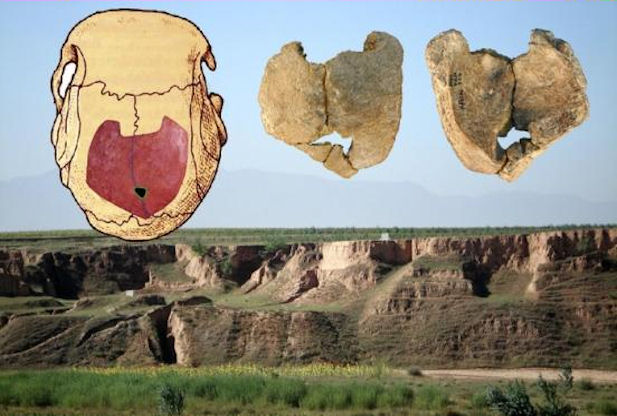
The skull - which was found at Xujiayao, a mountainous excavation site several hundred miles from the Mongolian border - contained an enlarged parietal foramen (EPF), or "hole in the skull," typically diagnosed as a rare genetic mutation in modern humans.
Using CT scans and 3-D imaging technology, the team was able to successfully produce a model of the highly fractured and fragmented skull. After the model was created, the team was clearly able to see the results of the congenital condition.
EPF, which appears in one out of every 25,000 modern human births, prevents the closure of the skull bones that typically occur within the first five months of fetal development. Based on the exceptionality of the genetic condition and other fossil evidence found in skulls from the same time period, the researchers theorized the genetic pools were very small in many Pleistocene communities.
"The probability of finding one of these abnormalities in the small available sample of human fossils is very low, and the cumulative probability of finding so many is exceedingly small," said co-author Erik Trinkaus of Washington University in St. Louis (WUSTL).
"The presence of the Xujiayao and other Pleistocene human abnormalities therefore suggests unusual population dynamics, most likely from high levels of inbreeding and local population instability," Trinkaus added.
The skull, dubbed Xujiayao 11, was found in 1977 at the Xujiayao site on the west bank of the Liyi River. A radioactive dating analysis of the skull and other specimens at the site found them to be around 100,000 years old. The researchers noted these specimens are morphologically different from Homo erectus and other modern humans.
Because of the individual's approximate age-of-death, the researchers said they do not believe the congenital defect significantly impacted the person's life. Although EPFs "have been associated with a variety of other developmental abnormalities and symptoms, including cranial bifida, cleft palate, scalp defects, headaches and seizures," the authors said they could not determine if this particular individual suffered from any of them because of lack of evidence.
The authors added that previous research has pointed to inbreeding as a major cause for the condition.
"Multiple studies have documented familial associations for EPF leading to inferences of their being inherited in an autosomal dominant fashion," they wrote.
Inbreeding amongst early human population would not be surprising if the numbers of individuals became small enough. Previous research has suggested a "population bottleneck," which would have happened before the Xujiayao 11 skull, may have driven humans to as many as 2,000 individuals worldwide. Without a proper knowledge of the risks of inbreeding or the societal norms, early humans would probably not have hesitated when it came to breeding with relatives. In fact, the survival of our species could have depended on our ancestors procreating amongst family members.



open fontanelle could be a sign of psychic abilities